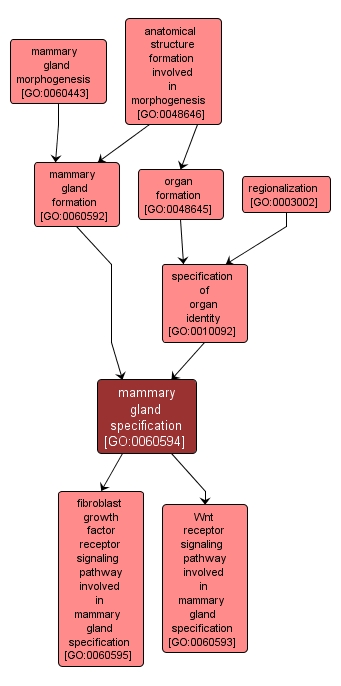GO TERM SUMMARY
|
| Name: |
mammary gland specification |
| Acc: |
GO:0060594 |
| Aspect: |
Biological Process |
| Desc: |
The regionalization process by which the mammary line is specified. The mammary line is a ridge of epidermal cells that will form the mammary placodes. |
Synonyms:
- mammary line specification
|
|

|
INTERACTIVE GO GRAPH
|














